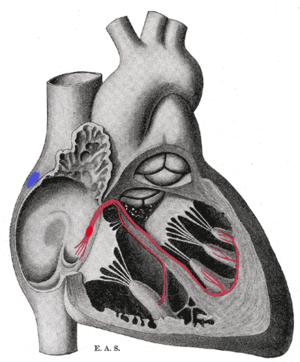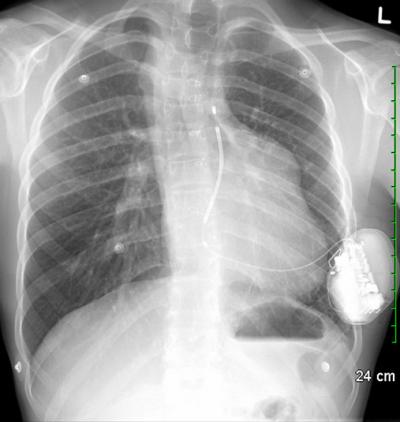The heart is a complex three-dimensional structure with mechanical properties that are inhomogeneous, non-linear, time-variant and anisotropic. These properties affect major physiological factors within the heart, such as the pumping performance of the ventricles, the oxygen demand in the tissue and the distribution of coronary blood flow.
During the cardiac cycle the heart muscle tissue is deformed as a consequence of the active contraction of the muscle fibers and their relaxation respectively. A mapping of this deformation would give increased understanding of the mechanical properties of the heart. The deformation induces strain and stress in the tissue which are both mechanical properties and can be described with a mathematical tensor object.
This is a preview of Biomedical Project Ideas: Visualization tool for Myocardial Strain Tensors.
Read the full post (172 words, 1 image, estimated 41 secs reading time)
A new ground-breaking technology was recently used at the University of Ottawa Heart Institute (UOHI) where two cardiologists, Dr. David Birnie and Dr. Pablo Nery, implanted a new innovative leadless defibrillator, the subcutaneous implantable cardioverter defibrillator (S-ICD), to a 18 year-old patient. Under Health Canada‘s special access program, this was only the third time this new type of ICD had been implanted in Canada.
Conventional defibrillators, known as transvenous defibrillators, are implanted with wires, called the leads, that snake through veins into the heart. When the defibrillator identifies any dangerous heartbeat, it delivers a shock through the wires to return the heart to its normal rhythm and allow it to get back to pumping blood steadily throughout the body.
This is a preview of Leadless Defibrillator: Groundbreaking Biomedical Research.
Read the full post (603 words, 5 images, estimated 2:25 mins reading time)

Image via Wikipedia
Just now out in the press is the news that
CEA-Leti and five partners are combining their expertise to develop a self-powered cardiac pacemaker eight times smaller than current models.
The Heart-Beat Scavenger (HBS) Consortium, which also includes the Sorin Group, TIMA, Cedrat Technologies, Tronics and EASII IC, is targeting an energy self-sufficient device that harvests mechanical energy from the movements of the heart, eliminating the need for batteries and post-implant surgeries to replace them.
A longer-term goal of the project is to reduce healthcare expenditures. Heart failure represents one of the biggest public-health costs today in Europe and the United States.
This is a preview of New Miniaturised Self powered Pacemaker to be built.
Read the full post (232 words, 2 images, estimated 56 secs reading time)
The prominence of biomedical science is rising in the UK, it has been suggested.
Writing in the Independent, Steve Connor claimed that over recent decades, biology has become an increasing priority.
This follows a time during the early half of the 20th century during which physicists “ruled the roosts”, he said.
He pointed to the government’s pledge to build a £500 million “cathedral of science” dedicated to biomedical science in London.
The UK Centre for Medical Research and Innovation will develop new treatments for the illnesses such as cancers, heart disease and strokes, flu and other infections. It is due to be completed by 2015 and will employ around 1,200 scientists.
This is a preview of Biomedical science 'rising in prominence'-MEDIPLACEMENTS.
Read the full post (169 words, 1 image, estimated 41 secs reading time)
The Right and Left Hearts are Connected in Series, but are Folded Together to Form a Single Unit
- The right heart pumps blood only to the lungs; its output is low pressure (25 mm Hg)
- The left heart pumps blood to the rest of the body; its output is high pressure (120 mm Hg)
- Because the 2 hearts are attached they beat in synchrony
- The 2 atria receive the incoming blood- they pump extra blood into the ventricles


